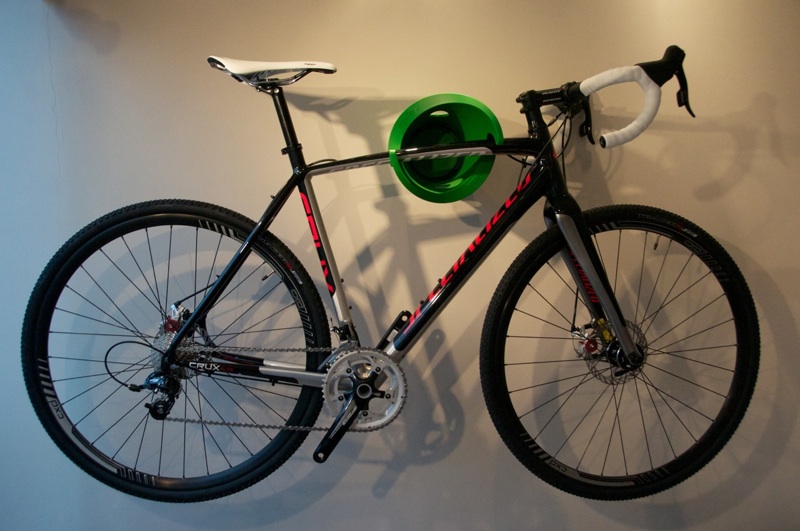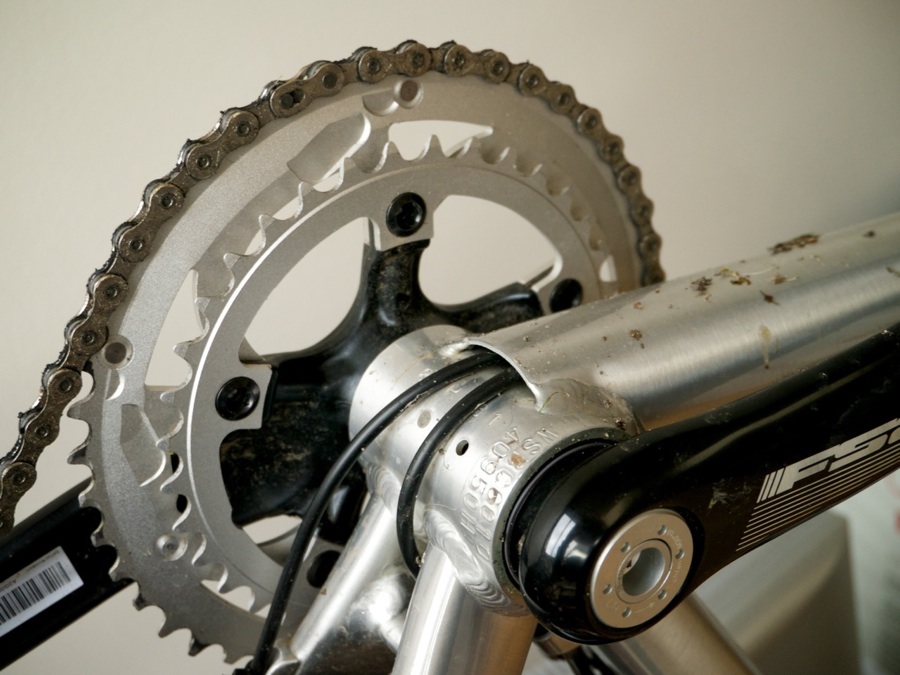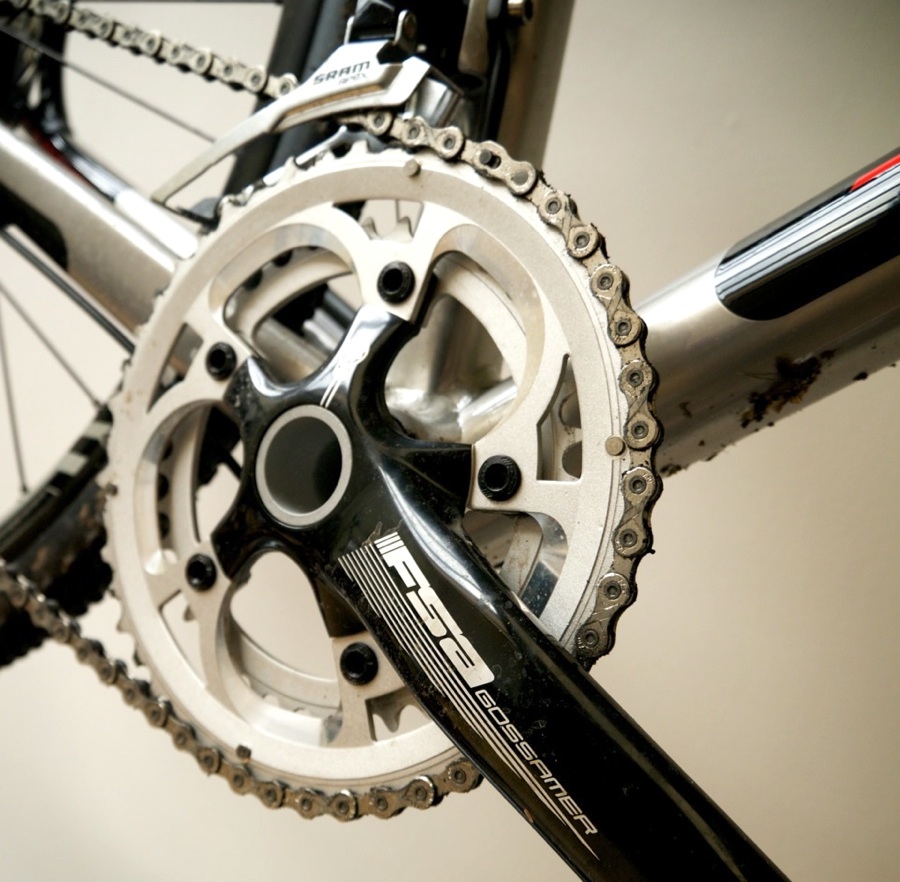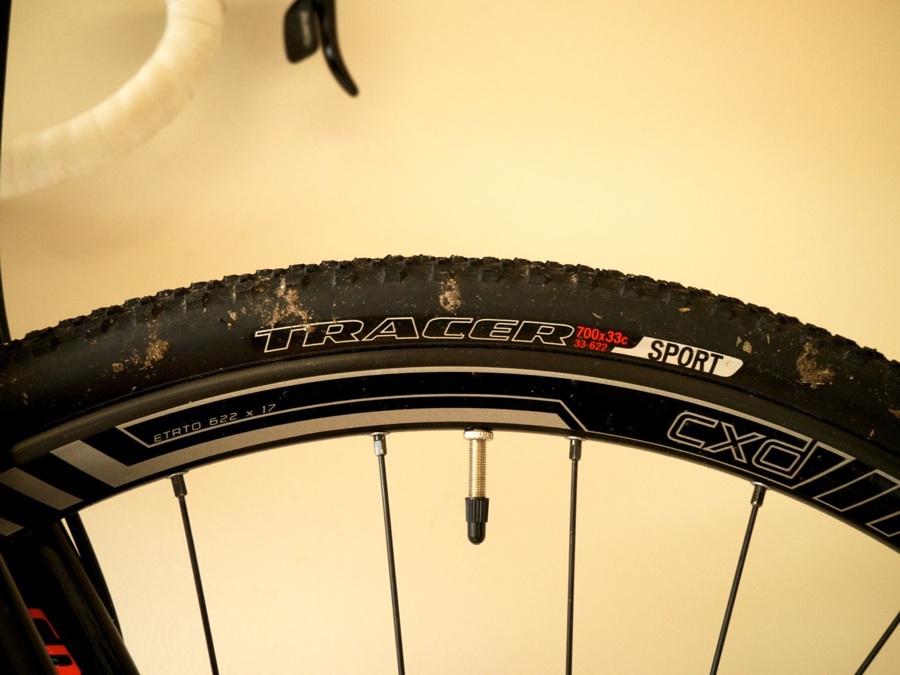We’ve spent a month aboard the Specialized CruX Elite Disc. Here’s what we found.
The aluminium frame and carbon fork were smartly finished, the SRAM Apex shifters and brakes effective, and the overall weight competitive for a bike of this nature. The wheels and tyres, however, let the side down a little and might be areas to consider for an early upgrade.
Once reacquainted with life aboard a ‘cross bike, we enjoyed the CruX Elite Disc very much. The handling was the right side of sharp, and the aluminium frame stiff enough to power along singletrack and road alike.

At 5ft 10”, the 56cm frame left us feeling sufficiently “on top” of the bike to push the front end into bends and to flick the bars (attached to the fork by a 100mm stem) through a series of single track berms; territory normally tackled on a mountain bike.
Cyclo-cross is synonymous with winter riding, and we tested the CruX Elite Disc during a period in which the skies opened almost every time we opened the door. We steeled ourselves with the notion that Ian Field would not retreat indoors at the first sight of inclement weather and ventured out numerous times in conditions little dryer than the sea.
This is a bike suitable for racing. The absence of mounting points indicates a package appealing to riders more inclined to pin on a race number than attach guards and racks.
The E5 alloy frame tested here remains unchanged from model year 2012, when it was Specialized’s sole race-oriented CX offering to the UK market. The carbon CruX is now available on these shores, but the E5 alloy still looks the part and would not appear out of place on the start line.
The more significant change from the model year 2012 offering is the addition of disc brakes. Cantilever bosses have disappeared from the rear triangle and from the updated carbon-bladed fork, one able to withstand the additional forces of disc braking. The clean lines and arguable improvement in mud clearance, combined with consistent braking, make this a positive change in our opinion. Mountain bikers looking to enhance their winter riding will appreciate the braking, but if you want the traditional appearance and easier maintenance of cantilevers, the standard Elite is still available.

We were concerned that the brutal conditions of ‘cross riding would lead to water and mud ingress in the frame and flipping the bike upside down revealed an interesting detail: the bulky down tube is not fully attached to the bottom bracket. A small ‘C’ section is exposed, not only to allow the cables to exit the frame, but also, presumably, muck. Interesting. We’re not sure what a few years worth of riding on salty winter roads will do to the inside of the frame, but this was a new detail to us and one that made some sense.
The flattened top tube proved an aid to portage, which, combined with a low-ish total weight, made the CruX Elite Disc a not-too-onerous burden to shoulder. We found a further indication of its racing inclinations in the height of its tapered headtube, which is lower across the entire CruX range than the more comfort (and practical) orientated TriCross range. Indeed, the whole package looks a little like a TriCross that has been going to the gym to bulk up a little. The welding on our test bike was neat and the finish – painted in places, brushed aluminium in others – was excellent.
We liked the full length cable protection, a feature that equivalent offerings from some rival manufacturers are missing. Protecting the shifting performance with full length outers is a good idea, and the internal routing certainly makes for some clean lines.
Specialized’s component choice for the CruX Elite Disc is pretty sensible. SRAM Apex takes care of the shifting duties and we have been very impressed with it’s performance during the test period; set up was simple and the levers and hoods were effective and comfortable. Talking of braking, those duties are handled with the mechanical Avid BB5 discs, 160mm at the front and 140mm at the rear. These have proved to be pretty decent stoppers, indeed they are more than ample for ‘cross duties, providing a decent amount of feel as well as consistent performance. The adjustment of the calipers is simple, but as usual the cup and cone style washers at the mounting points frustrates during the set up process.

Driving the whole machine forward on this 56cm model is a 172.5mm FSA Gossamer crankset, equipped with cross-specific 46/37 chainrings, a KMC X10 CP chain, and a fairly broad 12-28 Shimano Tiagra cassette – not a bad set up, and one which again performed faultlessly throughout the test period. Specialized have struck a good balance here between reliability, replacement costs and weight.
The Axis CXD wheels are a bit of a let down. We wondered if a simpler, shallower rim profile would have softened the ride a little and saved some rotating weight. The super stiff, near-aero profile of the rim will appeal to many, and certainly looks the part, but we would have preferred lighter rolling stock.
Consideration of the wheels led naturally to the tyres, which is where a perhaps greater compromise has been made. While the Tracer Sport rubber performed well on short grass, in mud and sand they were overwhelmed. On the road they were adequate; the short blocks hummed along easily, but the weather obliged us to venture out in less ideal conditions, and, as we pushed into slippery corners, we slid out too many times. Scrubbing more speed became our only option. Pro ‘cross racers turn up with a selection of rubber, and our views may be no more than personal preference, but if you’re seeking an all-round tyre, we’d advise you to look beyond the Tracer.
The finishing kit comes entirely from the Big S. The Phenom saddle has always been a comfortable perch for us, and the shallow drop CX bars were equally comfortable. While we remain convinced that white bar tape and mud make poor bedfellows (bitter experience, dear reader), the stock CX Pro gel tape is doing well.

The stiff ride of the alloy frame and deepish rims had us bouncing around initially, and being thrown off line by roots and rocks. For many riders, however, that is almost be the point with winter ‘cross riding. It is a skills sharpener; one that instills the benefits of relaxed arms to the road rider, and inspires the mountain biker, operating within a reduced ‘safety envelope’, to make more considered line choices.
The CruX Elite Disc is a well-realised machine, ready for ‘cross season race fun, the new breed of off-road sportives, and perhaps even to tackle some ‘mountain bike’ trails if you want to hone your handling skills. We’ll be sorry to hand it back.
The Specialized CruX Elite Disc is available in seven sizes from 46cm to 61 cm, in black, red, and brushed aluminium, and costs £1,500.





